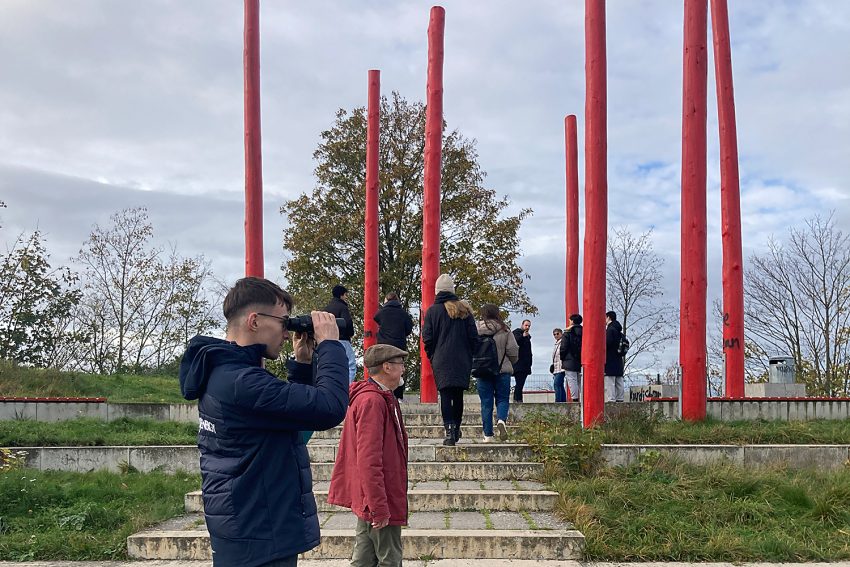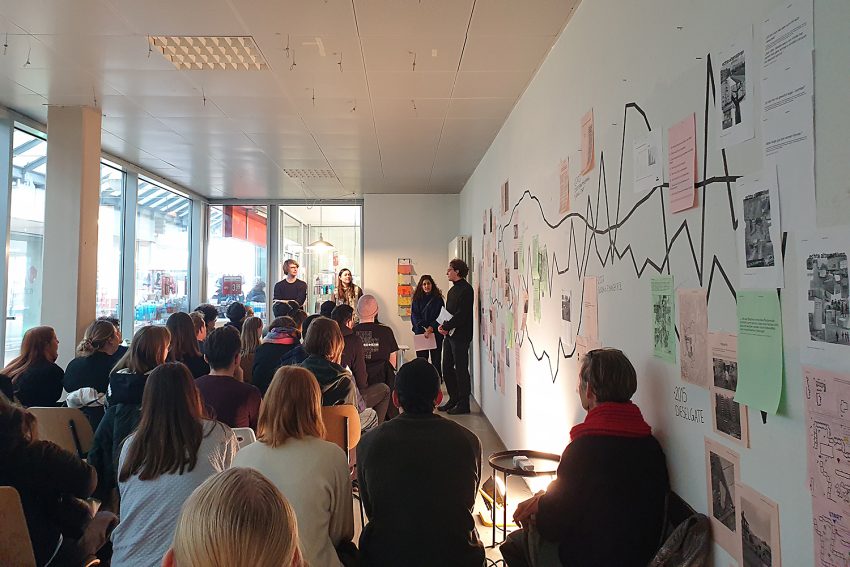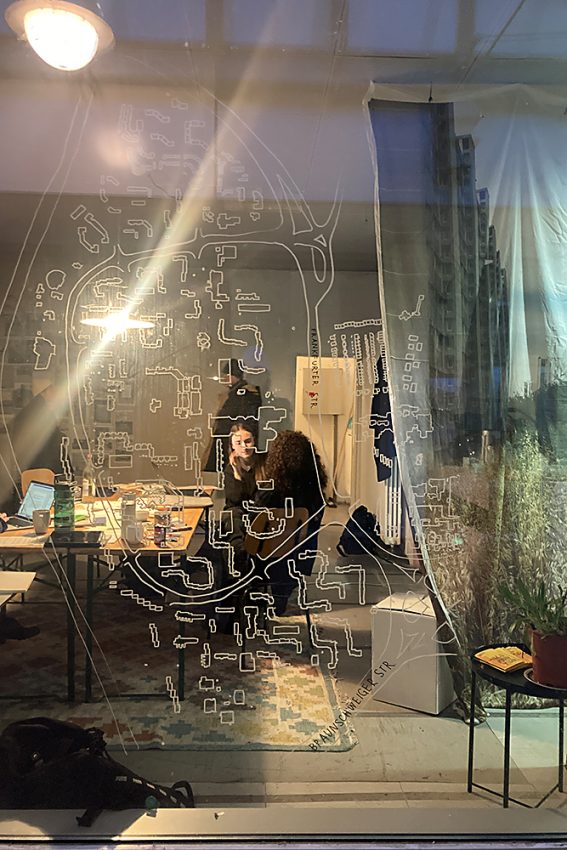Beziehungsweisen Westhagen: On the move in the neighbourhood Exhibition by architecture students in Wolfsburg
As in many European cities, large housing projects were built in Wolfsburg in the 1960s and 70s in response to the high demand for housing. Although Westhagen was planned and built under special circumstances, the neighbourhood can be seen as an example of such urban expansion in many respects. During the winter semester, around 50 students from TU Braunschweig have been studying Westhagen, researching topics as diverse as migration history and urban ecology. The students will be presenting an exhibition on the subject in the shopping centre from 4 April.

Walk through Westhagen. Students listened to stories from former and current residents of the neighbourhood. Photo credit: Licia Soldavini/TU Braunschweig
Every Monday in November, as part of a seminar at the Institute for the History and Theory of Architecture and the City (GTAS), students met in an empty shop in the shopping centre. They used the shop as a starting point for walks, listening to the stories of former and current residents of Westhagen and inviting people who work there and know the area to share their knowledge and experience with them. Westhagen’s green and open spaces were explored, from ichthyosaurs to wild boar. Other projects focused on architecture and, above all, living space.

The students met in an empty shop in the Westhagen shopping centre as part of the seminar at the Institute for the History and Theory of Architecture and the City (GTAS). Photo credit: GTAS/TU Braunschweig
The students were particularly interested in the good social interaction in the large housing estate and in Westhagen as a place where people with very different biographies – often based on personal experiences – come together. “The work offers an exciting view of Westhagen from the outside and shows that 20 years of the ‘Socially Integrative City’ funding programme have achieved a great deal,” says Kai-Uwe Hirschheide, first city councillor and city planning councillor, commenting on the results. The students documented their findings and conclusions in a variety of formats, including a board game, comics, drawings and infographics. All contributions are also presented in an accompanying booklet, which is available at the exhibition.
A look into the future of Westhagen

On 4 April, an exhibition will open in the temporary seminar room in the shopping centre. Photo credit: Licia Soldavini/TU Braunschweig
In the summer semester, the GTAS wants to build on these results and become more active in the public sphere. “After spending the winter semester focusing on the history of development and the basics, we want to try to look into the future in the summer,” says Professor Tatjana Schneider, head of the institute. Using techniques such as design, literature and film, the students want to speculate about possible futures in Westhagen together with the residents.
From April to June, the students and the team of the Institute for the History and Theory of Architecture and the City can be found in their temporary seminar room in the shopping centre (Hallesche Straße 40a) every Monday between 10:00 and 17:00. The official start will be on Thursday 4 April at 17:30 with the opening of the exhibition of the winter semester work. All those interested are cordially invited. The exhibition will be open on 5 and 6 April from 14:00 to 18:00.
The project is accompanied and supported by the Westhagen District and Cultural Centre Management and the Forum Architektur of the City of Wolfsburg.
